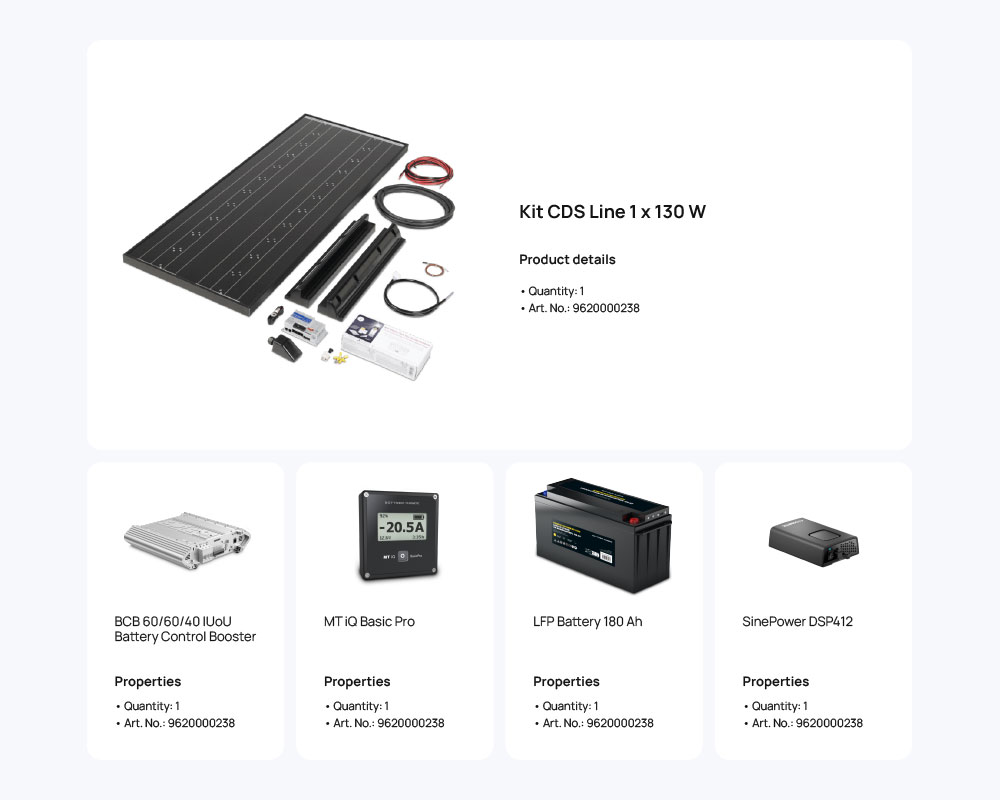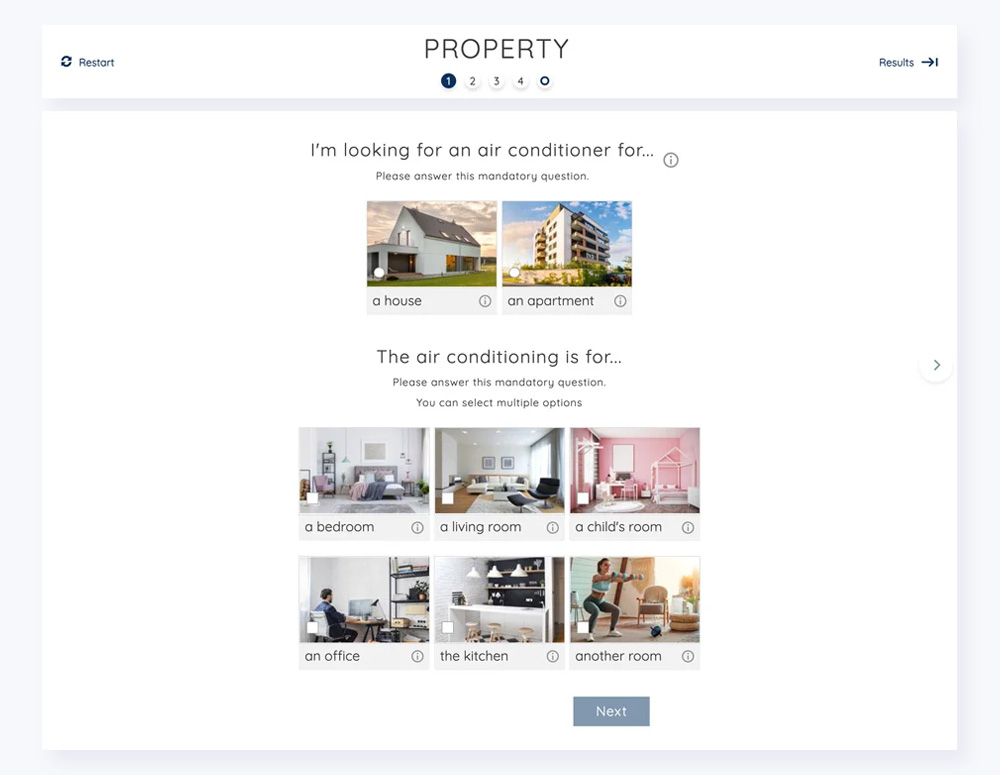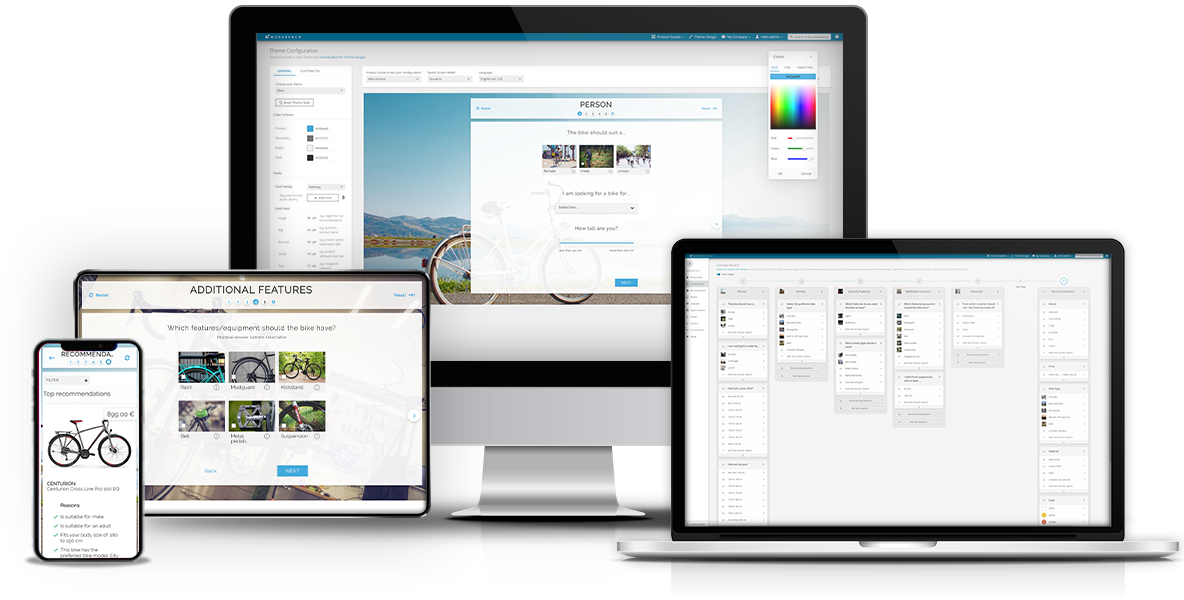Product Configurator - simply explained
Recognizing the unique needs of every customer is paramount. Therefore, it is increasingly important to offer tailored solutions.This is why an expanding number of businesses are leveraging digital configurators.
These configurators empower the customization of complex systems and variant-rich products to precisely match the personal requirements of each customer.
What is a Product Configurator?
Product Configurators are Guided Selling solutions that enable the individual assembly of products and product components, taking into account predefined configuration rules.
A significant advantage for companies is that the completed configuration can be directly transmitted to the CRM. This allows the sales team to identify which product configuration the customer is interested in and enables them to create intent-based proposals.
Furthermore, it is possible to integrate digital product advice into the configurator. This means that product details are not only visualized but also explained. Customers are thus guided step by step through the configuration and understand which configuration options make sense for them. Digital advice ensures that customers feel supported and can make an informed purchasing decision.
Functionality of Configurator Software
Configurations are knowledge-based and rule-driven. This requires predefined rules and dependencies. These rules ensure that configuration options align logically and prevent erroneous combinations.
Complex Calculations
Some solutions require complex calculations to be tailored individually to the use case of each customer. A product configurator can perform these calculations and provide the perfect recommendation from a wide range of variants.
Assembly Recommendations
If dependencies exist between multiple products, it is also possible to configure entire product sets. For example, Dometic uses the excentos Product Configurator to generate recommendations from multiple product components that are optimally tailored to the customer's requirements.

Who benefits from a Product Configurator?
Both B2B and B2C companies can benefit from the use of a configurator. Variant-rich products pose a challenge for companies, as not every variation can be depicted on their own website. After all, there can be hundreds or even thousands of different configuration options.
On the other hand, a Product Configurator can provide all variants and deliver the exact configuration to each customer. Therefore, the use of a Configurator is worthwhile for all companies that offer customizable products and tailored solutions.
Advantages
- Increased Customer Satisfaction: Each customer receives a personalized recommendation that fits their needs optimally.
- Error-Free Configuration: The implemented rules ensure that the selected options are compatible with each other.
- Lead Generation: Through CRM integration, sales teams receive pre-qualified leads.
- Improved Product Development: Companies can evaluate which configurations are most frequently recommended in order to focus their development efforts accordingly.
- Automated Quotation Creation: Quotations can be automatically generated to align with the delivered recommendation.
- Mass Customization: A configurator solution enables product personalization at high production rates.
Types of Configurators
Variant Configurator
B2C companies offering customizable products in their online shops often rely on 2D or 3D configurators to showcase the various variants of their products.
The main goal here is to illustrate the products and make them experiential for the customer. Especially the 3D configurator visualizes materials and surface textures of the products. Customers can customize their products in real-time and view them from different perspectives.
Practical Examples
- Automotive Industry
- Furniture Industry
- Apparel Industry
- Electronics Industry
Configurator for Complex Systems
Many industrial companies offer complex B2B solutions that are suitable for various application scenarios depending on the equipment.
Since each configuration is calculated individually, the sales team receives pre-qualified leads. Through the CRM integration of the software, they know what requirements the customer has for the respective system and which configuration best fits their use case.

Practical Examples
- Mechanical Engineering
- Automation Technology
- Medical Technology
- Construction Industry
Quotation Configurator
CPQ software (Configure Price Quote) is used to automate quotation creation and streamline order processes.
One advantage of CPQ software is cost calculation, as price calculations can become complex depending on the configuration. The Quotation Configurator not only ensures error-free quotes but also conserves valuable resources.
Practical Examples
- Sales
- Production
- Logistics
Configurators for Order Processing
Order processing for individually configured products varies depending on the company's strategy. Below, we have provided an overview of the different production approaches:
- STO (Stock-to-Order): Products are manufactured only once a customer places an order.
- PTO (Pick-to-Order): Products are retrieved from inventory once they are ordered.
- CTO (Configure-to-Order): Products are manufactured considering desired configurations.
- ATP (Available-to-Promise): Availability of ordered products is confirmed based on current inventory levels.
- MTO (Make-to-Order): Products are manufactured and customized to meet customer requirements only after an order is placed.
- ETO (Engineer-to-Order): Each product is individually engineered and manufactured for the respective customer.
Step-by-step to your Product Configurator
Our Configurator Solution combines product configuration with digital advice and provides the foundation for automated sales processes.
- Customized Product Configuration
- Guided Consultation
- Improved Order Management
- Reduced Sales Efforts
- Enhanced Customer Service
How much does a Product Configurator cost?
The costs vary depending on the specific implementation. It depends on what exactly needs to be configured and how much effort is required to implement the solution. For example, creating a 3D configurator is more complex if there are no CAD models of your products available.
Therefore, the costs for a configurator are typically determined individually for each customer.
Integration into existing Systems
We provide you with a short integration code that allows you to easily and platform-independent integrate the Configurator into your existing CMS, ERP, or CRM system.
Creating Your Configurator Tool
You can choose whether you want to create your Product Configurator in self-service or prefer a customized full-service solution.
For our self-service customers, we provide the excentos Workbench. With our intuitive platform, you can create your solution in just a few steps:
- Create Concept
- Upload Product Data
- Build Question Flow
- Customize Design
- Go-Live

If you have any questions about Configurators or our excentos solution, feel free to contact us. We look forward to hearing from you!